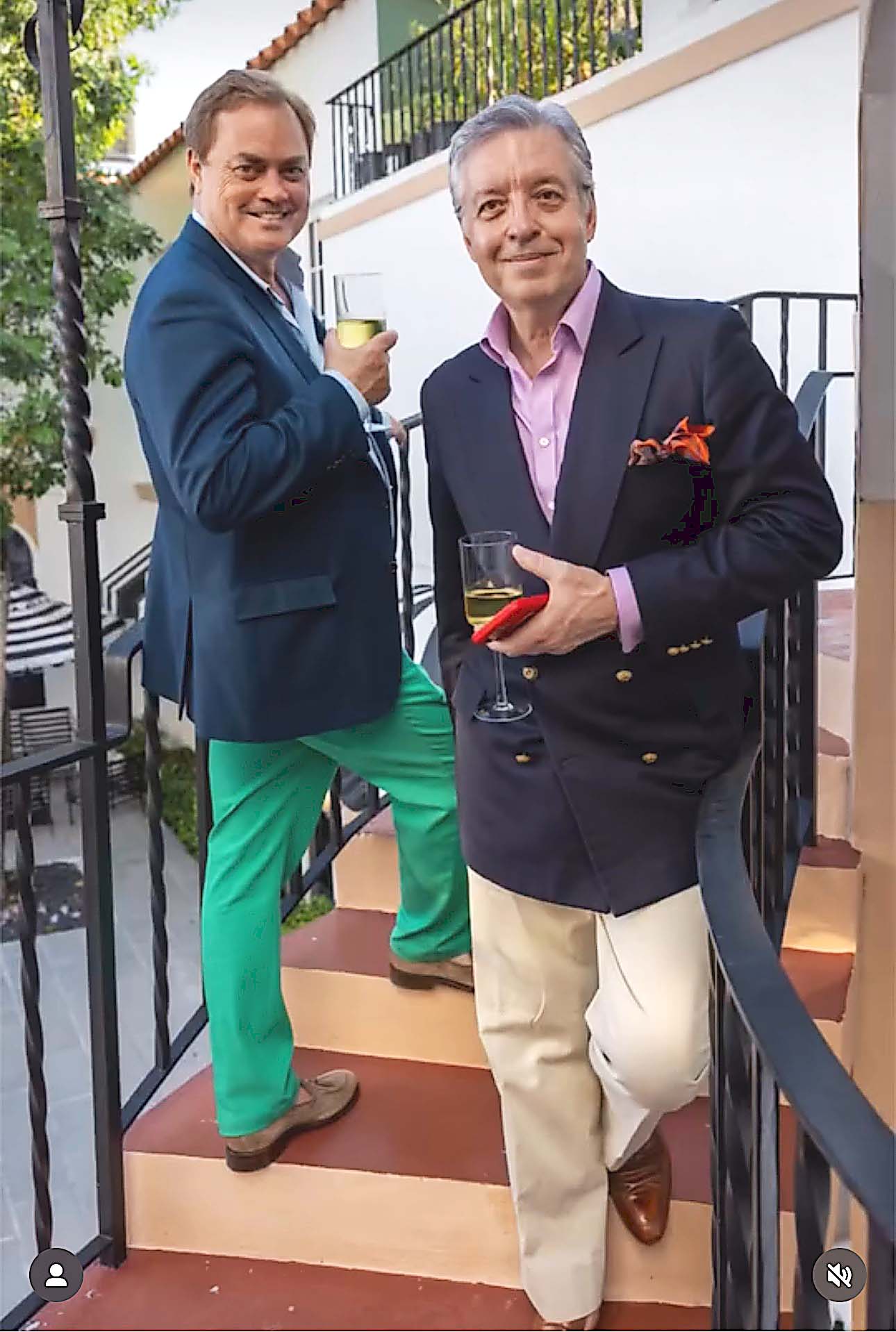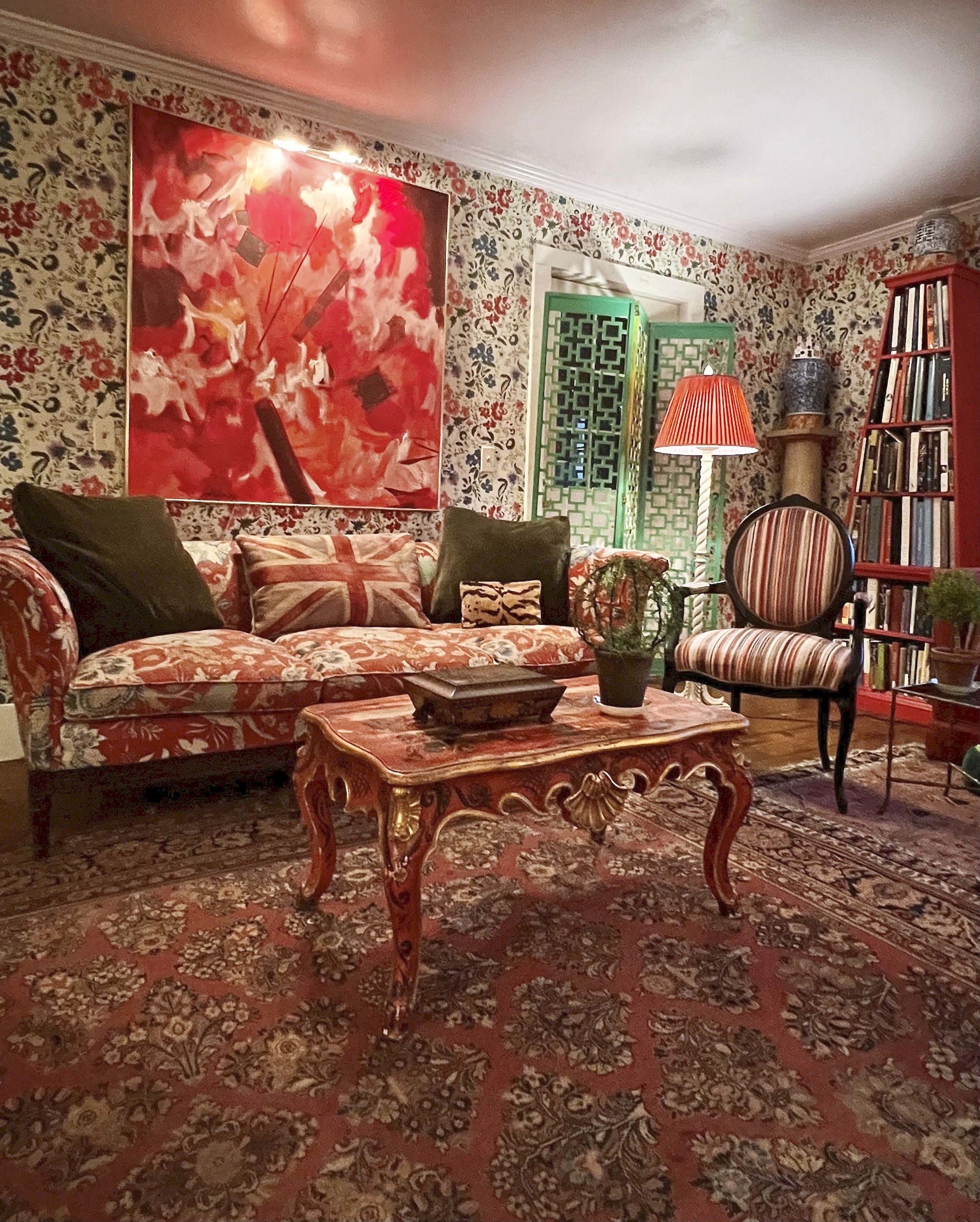#Mitchell #Owens #Antiques #Arts #Weekly

Mitchell Owens assumed his new role as editor of The Magazine Antiques on June 10. He succeeds the late Gregory Cerio. Christine Harris photo.
The Magazine ANTIQUES recently welcomed as its new editor Mitchell Owens, a passionate, eloquent observer of decorative arts and design. Over a worldly career that has spanned several decades and a host of best-selling publications, the self-described magpie of history has traveled widely in search of colorful, compelling stories to share with readers. He aims to bring the same sense of wonder and excitement to the pages and platforms of Antiques.
What should antiquarians know about you?
Other than an honorary degree from the New York School of Interior Design, I’m a complete autodidact. In some ways I’m an amateur, in the best, original sense of the word. I do deep dives into subjects and come up able to converse with the real experts. I like to seek out the obscure maker, the understudied object, the overlooked connoisseur, largely because I want to learn something new.
Your editorial predecessors at Antiques range from the gregarious Homer Eaton Keyes (1875-1938) and Wendell Garrett (1929-2012) to the more circumspect Alice Winchester (1907-1996). What kind of editor will you be?
I hope to be a bit of all. I’m very much interested in the details of how the magazine looks and sounds, how the paper feels, the quality of the images. I want the publication to be exceptional and distinctive in every detail. But I also like getting out and hope to be very much visible and accessible.

The dapper editor, right, attended the Institute of Classical Architecture & Art (ICAA)’s Addison Mizner Awards for Excellence in Classical and Traditional Architecture in Palm Beach, Fla. At left, Peter Lyden, ICAA president.
What is your vision for the publication, or should I say brand?
Everything to me is stories. Antiques is an important vehicle for telling new stories — revealing new research and introducing readers to new characters and collectors, meaning collectors of the past as well as the present. I want to appeal to people who love antiques, love history, love deep, rich narratives. I want to open a wide door onto a world some mistakenly think of as narrow and stuffy. Collections are fascinating, the people who assemble them even more so, especially collectors who are deeply articulate about what they collect and why. The idiosyncrasies of collecting fascinate me most of all.
You excel at bringing objects and interiors to life in your own writing. How will you bring that vitality to Antiques?
Objects may be inert but they’re seductive. I’m the sort of person who’s constantly touching things if left unsupervised. I love the way things feel, what they are made of, the quality of the materials, even the lack of quality. When I’m in an archive reading about a furnituremaker, I’m looking for the telling quote, the overlooked bill, how can I build a story around a detail. I want our writers to be passionate, too, and our writing to remain detailed and scholarly but colorful. Antiques are anything but staid.
You spoil your 39,500 Instagram followers @mrmitchowens with daily doses of beauty, adventure, curiosity and windows onto gracious living. Will you bring those qualities to Antiques?
My Instagram feed shows what’s going on in my head. I tend to be interested in new research that makes us look at an object in a completely different way than we did the day before. I’m fascinated by provenance. The dealer Louis Bofferding is one of my oldest friends in New York. He and I can spend an entire dinner talking about who owned a chair. Getting into the nitty gritty of things is a huge personal pleasure and I’m eager to produce stories that will stand as the last word, at least for a while. For Antiques, I envision a website that is nimble, newsy and daily in its posts. I’d love us to have another podcast or two. The staff and I have an extremely elastic envelope and can pack anything we want into it. You should feel you haven’t really feasted on Antiques unless you’ve made yourself a regular visitor to the website, our Instagram feed and newsletters. I want people to be obsessed.

Owens’ love of color, pattern and texture is on display in the living room of the Star House in Cooperstown, N.Y., where the editor lives with his husband, antiques dealer Matthew Zwissler, their children and dogs.
Might you tell us about your family?
My husband, Matthew Zwissler, is an antiques dealer and designer of furniture. He has a business on Chairish called Irwin and Lane, a moniker derived from our middle names. Our household is a busy one, with dogs, children and often an exchange student. We have two daughters. Catherine is 22, Gemma is 7. I may have to break away periodically to make sure the latter is not grabbing implements in the kitchen.
How long have you lived in Cooperstown, N.Y.?
About a decade or so. It’s a pretty town at the southern end of an extremely beautiful lake. We were living in a wonderful 1910 apartment in Washington Heights in Manhattan when we purchased an 1801 Federal farmhouse — quite small, very pure — in Sharon Springs, N.Y., in 2001 as a retreat. We moved to nearby Cooperstown when Catherine was old enough to not want to change schools again. Now Gemma is in school here. Cooperstown is a very familial place. Our Cooperstown house dates to around 1850 but has been added to continuously. We also have a foothold in Manhattan.
Didn’t you also for a time live in Morocco?
I grew up in the military and we moved all the time. Matthew went to high school in Turkey, followed by college in Switzerland and Paris. After 9/11 we decided to live abroad. We happened to be visiting one of Catherine’s godmothers and her family in Spain. And I just looked at Matthew and said, why don’t we live like this? I sent an email to Elle Décor saying I was resigning. We sold our apartment in Washington Heights and moved to Marrakech. We found Catherine, then a toddler, an independent French nursery school the day after we arrived. We lived in Marrakech’s historically French neighborhood for a couple of months, then found a very old, unrenovated house in the Medina. We’d come to live in a foreign country and didn’t want to be solely in a world of expats. We had a lot of Moroccan friends. Matthew speaks fluent French. He picked up enough Arabic to have simple conversations. My Arabic is absolutely non-existent. We stayed for three years and kept the house for another two years after that. Everyone seemed to know someone else, who knew someone else, who circled back and knew us. It was an interesting but odd, bifurcated life.

After the dislocations of 9/11, Owens moved to Morocco with his husband and their daughter Catherine, then a toddler. The noted designer and hotelier Meryanne Loum-Martin, right, helped the young family find its first apartment in Marrakech.
Do you collect?
Matthew and I collect vintage cookery books, which we use for planning themed dinners. We built a small collection of atmospheric albumen prints of Nineteenth Century Venice by the photographer Carlo Ponti (1820-1893). I love American Classical furniture — its strength, breadth and reddish-brownness, and the fact that it’s highly undervalued and I can actually buy a heroic chest of drawers for not terribly much. I have quite a serious Old Paris porcelain problem. I also like chairs. They’re people, you know, with arms, legs, a back and lap, and are so full of personality. I can typically find room for one more somewhere. I gravitate to small, romantic things that take me to another world, for instance Japanese tsuba — which, like Venice, is a love of Matthew’s — and repousse silver, which I can hold and study. It’s that idea of understanding the details, how a piece feels, how it was made and by whom. I love going down rabbit holes and want to take readers with me.
What dealer, collector or decorator of the past fascinates you?
Because it has been my world for so very long, the American decorator Ruby Ross Wood (1881-1950), largely because she started out as a journalist from a very modest background, as I did. She was ceaselessly curious and highly opinionated, a magpie of history — also a bit like me. I’ve wanted to write a book about her for a long time. I have some of her journals and scrapbooks, loans from her family. I’m also hugely interested in the marchand-merciers of Eighteenth Century Paris, individuals like Dominique Daguerre, an advisor to George IV of England. They were luxury purveyors who went between the guild craftsmen and their clients. Diderot described them as makers of nothing but sellers of everything.
Where is the most magical place your work has taken you?
I’ve been working on a biography to be published by Rizzoli about Pauline de Rothschild (1908-1976). For a time I stayed in Pauillac, in the Gironde region of France, working in the archives of the Château Mouton Rothschild. I was able to visit the grande pièce, or big room, that she created with her husband and a local architect around 1960. It remains almost exactly as it was, preserved by her grandson and the family. It’s spare and rich, somewhat surrealistic, outfitted with the most outrageously lovely things of many periods, but with lots of negative space. It’s hard to describe, but when there I felt not only in her presence but in her mind. It’s always fascinated me to look at the room in the Horst P. Horst (1906-1999) photographs that were published in Vogue.

Mitch Owens, center, with London dealers Laura Camporese Burzio and Luca Burzio at the European Fine Art Fair (TEFAF) in Maastricht, The Netherlands.
Where will we see you next?
I’m attending Nantucket by Design and Newport Design Week in July. I’m traveling to Madrid soon and will probably make another visit to Marrakech. I hope to go to the Antiques at the Gardens show in Birmingham, Ala., in October. Representing Antiques on the public circuit will be a huge pleasure. It’s important for the editor of any magazine to make personal contact with loyal readers and potential ones.
How do you accomplish it all?
I’m good at juggling, or I’ve just learned to be very fast.
—Laura Beach




